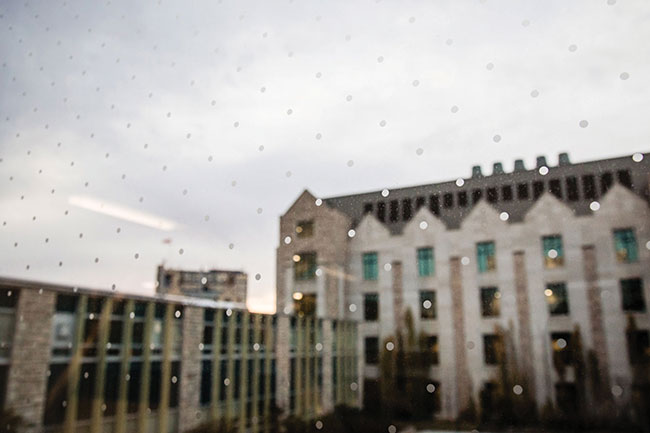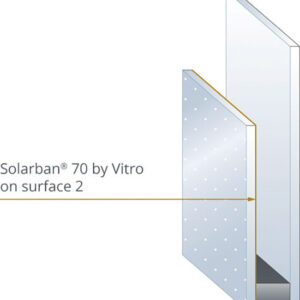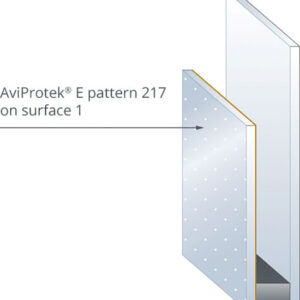
Features
Films, coatings & laminate
Bird friendly, confirmed
The University of Saskatchewan found bird-friendly glazing stopped collisions altogether.
March 30, 2023 By Marion Pynn, Walker Glass
 The University of Saskatchewan chose Walker’s Aviprotek E design 217 that uses acid-etched marks in a two-by-two-inch pattern on surface #1. And it worked to prevent bird strikes.
Photos courtesy University of Saskatchewan
The University of Saskatchewan chose Walker’s Aviprotek E design 217 that uses acid-etched marks in a two-by-two-inch pattern on surface #1. And it worked to prevent bird strikes.
Photos courtesy University of Saskatchewan When Flad Architects took on the University of Saskatchewan’s Collaborative Science Research Building (CSRB) in 2018, they knew they were in for a challenge. This project was designed to meet the institution’s strict Sustainability Strategy and aim for Green Globes certification, as well as contributing to community life on campus and supporting the needs of multiple science faculties.
To meet its goals, the building would have to serve state-of-the-art research labs with enhanced energy needs, include greenhouses for crop research, give sight lines onto campus activities, and merge seamlessly into the university’s traditional Collegiate Gothic aesthetic. Oh, and of course, it would have to be bird-friendly. As if that wasn’t enough, all this was to take place at the heart of the Canadian prairies, in frigid ASHRAE climate zone 7A.
How on Earth was this going to work?
Chitani Ndisale and Chuck Mummert of Flad Architects, together with the University of Saskatchewan and Keith Henry of Henry Downing Architects, told us how they accomplished these ambitious goals.
Commitment to sustainable development
The University of Saskatchewan’s sustainability strategy commits the institution to be “the university the world needs.” Strategies to meet this commitment include a robust framework based on the United Nations’ sustainable development goals. To achieve these goals, the university is directing its efforts toward long-term solutions such as energy-efficient architecture and learning programs geared toward sustainable development. As a research centre dedicated to eco-friendly agriculture, the CSRB project was a golden opportunity to act on these principles. Ndisale, the project manager, was enthusiastic about the opportunity. He describes the experience, saying, “It was a wonderful thing to be able to work on a project where everybody, from the funding stream perspective to the actual campus goals, aligned in wanting a building that was ecologically responsible.”
Why use bird-friendly glass?
Even though the city of Saskatoon and the province of Saskatchewan have no bird-deterrent building legislation, bird-friendly glass at the University of Saskatchewan was non-negotiable. Faculty and staff had had enough of seeing birds collide against campus windows. Furthermore, ecological health was at the heart of the new building’s mission. It only made sense to take measures to protect wild bird species.
Flad Architects tackled the problem head-on by selecting bird-friendly glass for the building’s windows. After extensive research, they chose AviProtek E design 217, which features a two-by-two-inch pattern of five-millimeter acid-etched dots on the first surface. Several factors led to this choice. First, the pattern itself: the acid-etched markers are placed close enough to satisfy the CSA A460:19 standard for bird-friendly building. This standard is widely accepted as the best model for bird-deterrent glass. It requires that visual markers be spaced no more than 50 millimeters apart either vertically or horizontally, so small bird species won’t try to fly between them.
Second, the placement of the pattern. Visual markers must be placed on the first surface of the glass. This is because the first surface will be visible to birds in most weather and lighting conditions, whereas markers on inner surfaces are often hidden by reflections or glare. These principles have been tested on many buildings as well as in field studies and have proven themselves to be the best method for effective bird strike deterrence.
Let’s see how well they performed at the University of Saskatchewan.
- Using acid etching to create the bird-friendly pattern allows the design to be on surface #1, where it is more effective, while allowing low-E coatings to go on the interior surfaces for better energy efficiency.
Bird collisions: risks and results
Since the CSRB’s construction, graduate students have studied bird-to-glass collisions in Saskatoon and on the University of Saskatchewan campus. A 2021 master’s thesis analyzed collision rates in Saskatoon based on data gathered from FLAP Canada’s Global Bird Collision Mapper website. Candidate Abbey Duinker found that the city’s downtown core represented fully one-fifth of recorded bird strikes in Saskatoon. The University of Saskatchewan campus saw some of the very highest collision rates within that same neighbourhood.
An earlier thesis from master’s candidate Anang Grace Yashim recorded bird strikes against four different campus buildings, including the CSRB. The study was conducted over three months during the spring/summer migration and breeding seasons, when wild bird activity was at its peak.
Like Duinker, Yashim found that the campus windows posed a serious threat to local bird life. The Agriculture and Bioresources building alone accounted for nine bird collisions over the three months of observation. Interestingly, none of these collisions occurred at the acid-etched portions of the facade, nor around the acid-etched glass adjacent to the building’s rooftop garden.
There were zero collisions recorded against the CSRB.
What should we conclude from these studies? Even in a proven high-risk area such as the University of Saskatchewan campus, bird strikes are preventable. Effective bird-friendly glass can mean the difference between life and death for bird populations.
High latitude, high performance
In addition to preventing bird strikes, the CSRB had to follow the University of Saskatchewan’s 2021-2030 Sustainability Strategy, which is modelled on the United Nations’ sustainable development goals. The team at Flad Architects was also aiming for Green Globes certification. This might not seem too difficult at first, but let’s not forget that they were designing a building to serve the specialized energy requirements of multiple science labs. Oh, and of course there was the question of heating a 72,118-square-foot complex through Saskatoon’s sub-zero winters. Reaching the project’s energy efficiency targets would be a challenge.
The team at Flad Architects could have made their lives easier by reducing window space. However, that would have meant compromising on the project’s esthetic and future users’ visual comfort, and the team wasn’t willing to make those concessions. Ultimately, they found their solution in a Solarban 70 low-emissivity coating from Vitro Architectural Glass. They were able to pair this treatment with bird-friendly glass from the AviProtek E series, which combines bird-deterrent markers on surface one with a Solarban low-e coating on surface #2. At the CSRB, the resulting sealed units delivered an SHGC value of 0.27 and U-value of 0.28 while maintaining 64 percent visible light transmittance. With this combination, Flad Architects was able to meet their project performance goals without sacrificing views or aesthetics.
Ndisale explains, “From the design perspective, having higher percentages of glazed area obviously made the building a lot more attractive. But there was a lot of back and forth, a lot of integration. We worked with our engineering partners to come up with that perfect balance of opaque surfaces versus. transparent surfaces. The glass product allowed us to have the maximum allowable percentage of glazed areas because it had a higher performance level.”
The work that Ndisale and his colleagues put into integration paid off. The project earned two Green Globes certification, as well as Honourable Mention for Integrated Design in the 2019 Premier’s Awards of Excellence.•
This article was originally published on the Walker Glass blog.
Print this page

